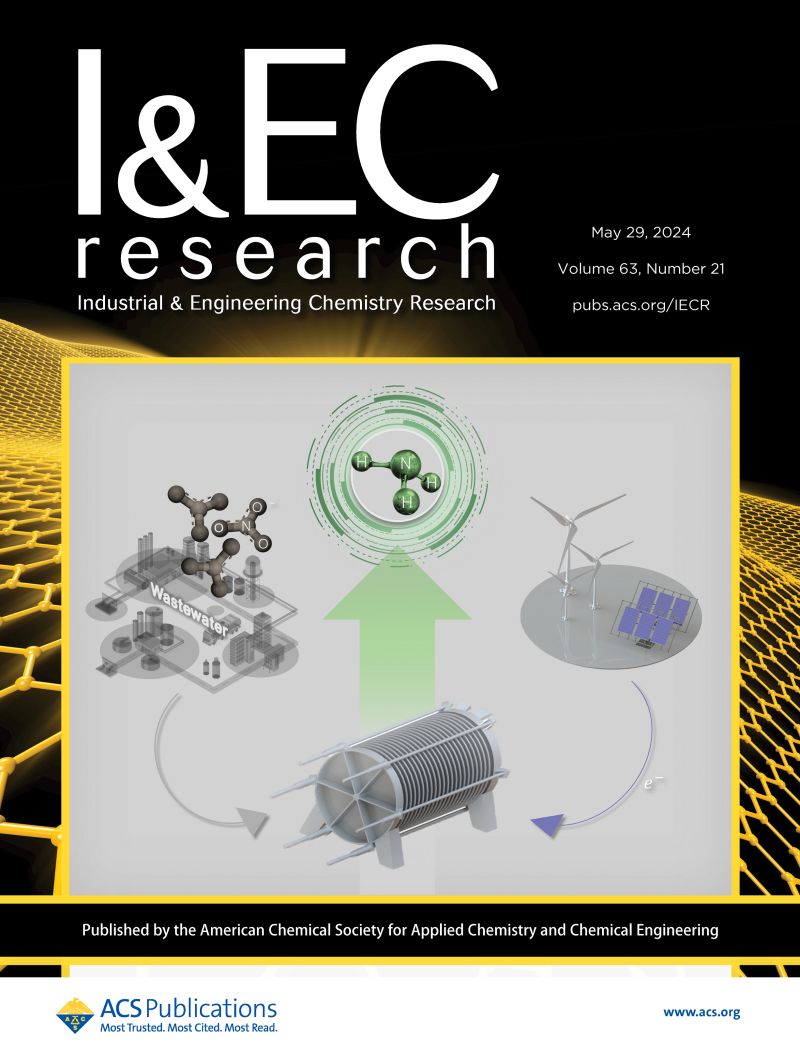Impact of Hydrophobic Ionic Liquid Mixtures on Cobalt (II) Extraction from Sulfate Media at Low pH: Stoichiometry and Operating Variables Study
IF 3.8
3区 工程技术
Q2 ENGINEERING, CHEMICAL
引用次数: 0
Abstract
Global demand for cobalt (Co) is increasing due to its essential role in lithium-ion batteries for electric vehicles and renewable energy storage systems. However, efficient extraction remains challenging because of the complex composition of ores and the associated environmental concerns. This study examines the stoichiometry of Co extraction from a sulfated acidic aqueous phase containing Co, nickel (Ni), manganese (Mn), and iron (Fe) at low pH levels. Two ionic liquid (IL) combinations were identified as optimal for extraction and selectivity at pH values of 0.85 and 3.28: trioctylmethylammonium benzoate ([Toma][Ba]) dissolved in 1-octyl-3-methylimidazolium bis((trifluoromethyl)sulfonyl)imide ([Omim][Tf2N]) and trioctylmethylammonium di(2-ethylhexyl)phosphate ([Toma][D2EHP]) in 1-methyl-1-octylpyrrolidinium bis(trifluoromethyl)sulfonyl)imide ([Ompy][Tf2N]), respectively. The results show improved Co extraction and selectivity at acidic pH levels compared with conventional organic phases, such as D2EHPA/CYANEX 272 dissolved in kerosene. This approach could potentially eliminate the need for Fe precipitation steps prior to solvent extraction. Co extraction was found to follow an ion exchange mechanism, as confirmed through experimental assays and theoretical calculations. Analysis of operating variables revealed that increasing temperature decreases Co extraction, while higher extractant concentrations significantly enhance Co recovery (by approximately 50%), although with reduced selectivity.

疏水离子液体混合物对低pH硫酸盐介质中钴(II)提取的影响:化学计量学和操作变量研究
由于钴在电动汽车锂离子电池和可再生能源存储系统中的重要作用,全球对钴(Co)的需求正在增加。然而,由于矿石的复杂成分和相关的环境问题,高效提取仍然具有挑战性。本研究考察了在低pH值下从含有Co、镍(Ni)、锰(Mn)和铁(Fe)的硫酸酸化水相中提取Co的化学计量学。在pH值为0.85和3.28时,确定了两种离子液体(IL)的最佳萃取和选择性:三辛基甲基苯甲酸铵([Toma][Ba])分别溶于1-辛基-3-甲基咪唑双(三氟甲基)磺酰基)亚胺([Omim][Tf2N])和三辛基甲基二(2-乙基己基)磷酸铵([Toma][D2EHP]),分别溶于1-甲基-1-辛基吡啶双(三氟甲基)磺酰基)亚胺([Ompy][Tf2N])。结果表明,与常规有机相(如溶解在煤油中的D2EHPA/CYANEX 272)相比,在酸性pH水平下Co的萃取率和选择性都有所提高。这种方法可以潜在地消除溶剂萃取之前铁沉淀步骤的需要。通过实验分析和理论计算证实,Co萃取遵循离子交换机制。操作变量分析表明,温度升高会降低Co的提取率,而萃取剂浓度升高会显著提高Co的回收率(约50%),尽管选择性降低。
本文章由计算机程序翻译,如有差异,请以英文原文为准。
求助全文
约1分钟内获得全文
求助全文
来源期刊

Industrial & Engineering Chemistry Research
工程技术-工程:化工
CiteScore
7.40
自引率
7.10%
发文量
1467
审稿时长
2.8 months
期刊介绍:
ndustrial & Engineering Chemistry, with variations in title and format, has been published since 1909 by the American Chemical Society. Industrial & Engineering Chemistry Research is a weekly publication that reports industrial and academic research in the broad fields of applied chemistry and chemical engineering with special focus on fundamentals, processes, and products.
 求助内容:
求助内容: 应助结果提醒方式:
应助结果提醒方式:


